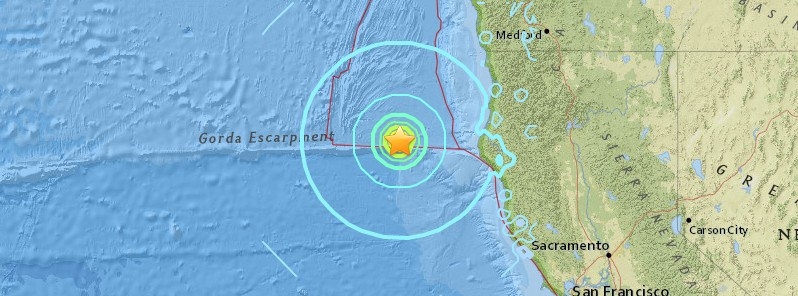On December 8, a 6.5-magnitude earthquake struck about 100 miles off the northern California coast, with light shaking being felt a few miles south of San Francisco and all the way up to east central Oregon. Thankfully there have been no reports of injuries, deaths or serious damages, and no tsunami threat came of the quake.
However, quakes like these—where human life is spared, are always good warnings—nature’s way of reminding us that we’re not really as in-charge as we might think we are.
If you feel that you’re semi-prepared but have found yourself lulled into a false sense of security, you may want to brush up on your earthquake preparation and reaction steps.
After all, the right reaction could save your life!
If you live along the west coast, and in BC especially, there is a high risk of earthquakes. And because a lot of BC is sparsely populated, you may find yourself on your own after an earthquake for up to 2 weeks! If you live in a harder-to-reach area or on Vancouver Island, this means that your survival kit should have enough food, water and other supplies to keep you self-sufficient for two weeks.
Besides the longer-term self-sufficiency, your immediate reaction to the earthquake should be the same: drop, cover, and hold on. Do not run outside or to other rooms during the shaking.
Below are instructions for a few different scenarios outside of the home, where you could typically find yourself at the time of an earthquake:
- In a wheelchair: Lock wheels and remain seated until the shaking stops. Protect your neck and head with whatever is available.
- In a bed: Stay where you are, hold on, and protect your head, even if it’s just with a pillow.
- In a stadium or theatre: Either stay in your seat or drop to the ground between the rows, covering your neck and head with your arms. Don’t let the crowd panic you.
- In a store: Watch out for heavy items falling from high shelves. If you must move away from them, drop to the ground first, then crawl the shortest distance possible and cover your neck and head.
- Outside: (On the beach:) Move to a clear area, free of buildings, power lines, trees, signs or vehicles. Drop, cover and hold on. If you’re on or near the beach and there is a tsunami risk, start walking quickly to higher ground as soon as possible. Don’t wait for authorities.
- In a car, driving: Pull over, stop and set the emergency brake. Avoid overpasses, bridges, power lines and signs. Stay inside the vehicle until the shaking stops and if a wire falls on your vehicle, wait until a trained person has removed it.
Once the shaking stops, wherever you are, try to stay calm and move with caution. If you are injured, treat yourself as soon as possible, before helping others. Then proceed with caution and be ready to drop again during aftershocks.
For more BC-specific earthquake safety tips, please check out Prepared BC’s Earthquake and Tsunami Smart Manual. Or check out some of our previous blog posts, chock-full of tips!
-Article contributed by Sophie Wooding – Avid gardener and cyclist in Victoria, BC and Content Writer for Frontier.io

